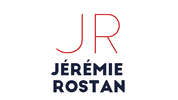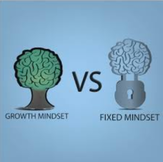|
As noted in a recent study on the subject, the transition to secondary school can be very challenging: “the grades of students tend to decrease during the transition to the ninth grade, and often do not recover. When such students underperform in or opt out of rigorous coursework, they are far less likely to leave secondary school prepared for college… In this way, early problems in the transition to secondary school can compound over time into large differences in human capital in adulthood.”
However, the researchers add, “one way to improve academic success across the transition to secondary school is through social-psychological interventions, which change how adolescents think or feel about themselves and their schoolwork and thereby encourage students to take advantage of learning opportunities in school.” This is especially true of “growth mindset” interventions, which “address the beliefs of adolescents about the nature of intelligence, leading students to see intellectual abilities not as fixed but as capable of growth in response to a dedicated effort, trying new strategies and seeking help when appropriate.” Indeed, a fixed mindset has three negative effects on student psychology:
In their article, the researchers report the results of the National Study of Learning Mindsets, which examined the effects of a short, online growth mindset intervention in a nationally representative sample of high schools (N=65) in the Unites States. For the purpose of this experiment, 12,500 low-achieving ninth graders (compared to their peers) were split into two conditions, one half receiving the intervention, and the other half covering the same material (neuroscience of learning) without addressing beliefs about intelligence. The intervention consisted of two self-administered online sessions lasting approximately twenty five minutes and occurring roughly twenty days apart. During the first session, students learned the basics of growth mindset theory (that an individual’s intellectual abilities can be developed in response to effort, taking on challenging work, improving one’s learning strategies, and asking for help when appropriate.) During the second session, students were invited to deepen their understanding of this theory (through stories from older students and admired adults) and to reflect on its practical implications and applications (by coaching a future Grade 9 student experiencing challenges at the beginning of the year.) Comparing student surveys as well as grade point averages in core ninth-grade classes (mathematics, science, literature, and social studies), the researchers found that the intervention was successful in reducing the prevalence of fixed mindset beliefs and had a moderate, but statistically significant impact on performance: a 0.10 point increase, on average. Interestingly, the effect on GPAs showed great variability across schools. Analyzing the results further, the researchers were able to identify an important condition under which the intervention was especially effective: GPAs improved the most when the behavioral norms that surrounded students enhanced the growth mindset belief system. In schools where peer norms were supportive of challenge-seeking, the positive effect was almost double. In addition, the growth mindset intervention also increased the likelihood of challenged students taking advanced mathematics in Grade 10 by 9%. Reference: Yeager et alia (2019), “A National Experiment Reveals Where a Growth Mindset Improves Achievement”, Nature, August 2019.
0 Comments
Your comment will be posted after it is approved.
Leave a Reply. |
|
Proudly powered by Weebly

